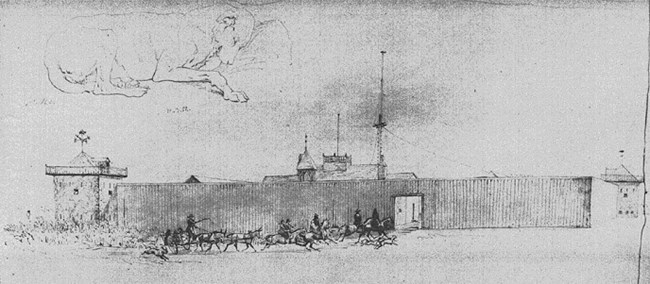
Smithsonian Institution, National Anthropological Archives, NAA INV 06449700 During Fort Union's thirty-nine years in operation, thousands upon thousands of people with a variety of backgrounds and motivations for visiting walked or rode their horses or wagons through the post's towering green gates. Whether coming here for reasons of employment, trade, or travel, these commingling people from numerous nations spoke a "Babylonian confusion of languages," among them, noted the post's Swiss clerk Rudolph Friederich Kurz, "Assiniboin, Crow, Herantsa [Hidatsa], Cree, Mandan, and even Blackfeet," plus "English, French, Spanish, and German." Managers and Workers Tribes Explorers and Travelers |
Last updated: April 24, 2021
